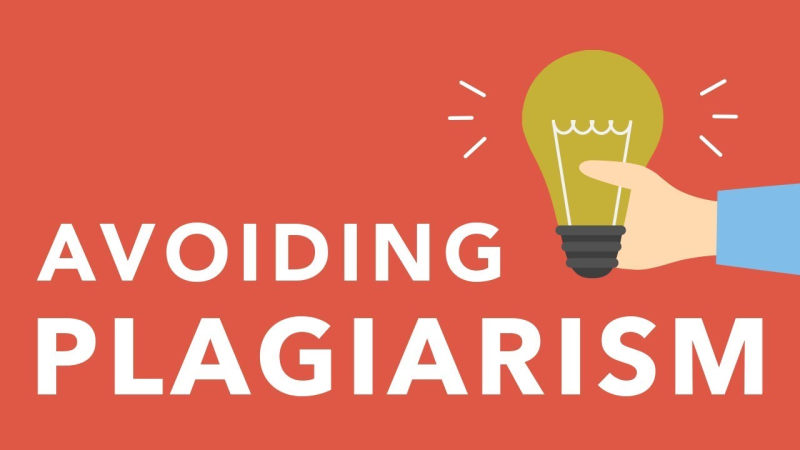Plagiarism is one of the biggest concerns for writers. It ruins their reputations, affects credibility, and can have legal consequences. Therefore, every writer wants to avoid it. However, many fail to do so.
Actually, some students and even professional writers unintentionally copy others’ words or forget to mention sources. Fortunately, avoiding plagiarism is no longer a big deal. If you genuinely want to avoid plagiarism and write original content, it’s not difficult at all.
In this blog, we will share the best strategies to avoid plagiarism.
Proven Strategies to Avoid Plagiarism
Conduct Thorough Research
Whenever you have to write something, make sure to research the topic properly. Basic reading creates shallow content. When you only collect a few sources, your content starts to mimic them. And in most cases, you don’t even notice it at all. The result? Plagiarism!
Therefore, when you research, gather data from multiple sources, including journals, reputable websites, interviews, and reports. Also, make sure to look for conflicting perspectives. It will expand your knowledge and help you cover the topic appropriately. The more angles you explore, the easier it is to form your take.
And don’t just copy facts. Instead, understand them well. Then explain them in your own words. It’s a great way to write original content without plagiarism.
Take Notes
Reading something without taking notes might not help you at all. Your brain might forget some details. Moreover, it blurs sources. And later, you might copy unintentionally. Therefore, don’t always rely on your memory.
When you research your topic, make sure to write key points. You can write them down in another file or write them in your notebook. Also, label quotes, clearly mark opinions, and group ideas by topic, not by source. These small steps prevent mix-ups and help you track what’s yours versus what came from somewhere else.
Add Personal Anecdotes and Examples
When it comes to writing unique content, nothing beats a real story. Your own experience is impossible to plagiarize. That makes it powerful. It brings your content to life and builds a connection with readers. Examples also provide context for data or arguments, and they help people understand abstract concepts.
For instance, you are writing about time management. Don’t just cite expert tips. Instead, also mention what worked for you or share a lesson you learned the hard way. This transforms generic advice into unique, memorable content.
If you don’t have a personal story to tell, you can also use a hypothetical one. As long as you create it yourself, it’s original.
Develop Your Own Style
Writers who copy often sound stiff. Their writing feels off. Why? Because they are imitating someone else. You can’t plagiarize if you sound like you. Therefore, you must work on developing your own writing style.
For that purpose, find your voice. Ask yourself: Are you casual or crisp? Do you use humor? Do you ask questions? Moreover, experiment with multiple tones, sentence lengths, and structures. And write more often. The more you write, the more precise your style becomes. Soon, readers will recognize your voice anywhere.
Use Proper Citations
Quoting someone isn’t wrong. But stealing their words without credit is. And that’s where citations come in handy. They keep your content clean, honest, and professional.
If you use a fact, a stat, a theory, or an exact phrase from another source, cite immediately. However, when you cite someone, always use the correct format. APA, MLA, and Chicago are the most common citation styles used worldwide. Know which of them is required for your field or work and use it.
Make sure the citation links to the original source, not a secondhand article. That shows you did your homework.
Reword Text, When Required
Some information is essential. But quoting everything makes your writing clunky. That’s where rewriting comes in. But here’s the key: rewriting doesn’t mean swapping a few words with their synonyms.
You need to fully understand the original idea. Then, rewrite it from a different angle. For that, you can try different techniques, including changing the structure, refining the tone, using new examples, etc. However, whichever method you use, ensure that the meaning remains intact.
If you don’t know how to rewrite something, you can use an online tool to change your words, remove plagiarism, and restructure content without changing its meaning.
Use Quotation Marks
Sometimes, we cannot rewrite information. Instead, we have to use the same words written by the original author. In such cases, use quotation marks and cite the original study, even if it’s just a short phrase or common knowledge in your industry.
However, don’t overuse quotes. A few strong ones work better than dozens of small ones. They lose impact when overdone unnecessarily.
Manage Your Time Well
One of the top reasons people plagiarize is time pressure. When they don’t have much time left to submit work, they panic and try to find shortcuts. Additionally, they sometimes forget to cite sources.
If you want to avoid plagiarism, give yourself enough time to research, think, write, revise, and check your work if you are writing something big, set mini-deadlines for each section. And don’t procrastinate. Last-minute work always looks sloppy. And it's risky.
Conclusion
Today, writing original content isn’t optional. It’s essential. Yes, it takes more work. But it pays off. People respect honesty, trust effort, and value unique perspectives.
So, research hard, think harder, and then write in your voice. Every sentence should sound like you. Every idea should pass through your lens. That’s how you create work that lasts.
And the best part? Once you master these strategies, you will never have to worry about plagiarism again.










